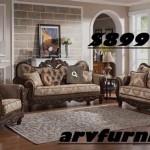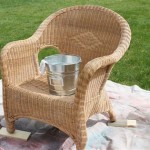Replacement Webbing For Lawn Furniture: Revitalizing Outdoor Comfort and Style
Lawn furniture webbing, often overlooked until it begins to sag, break, or fade, is a crucial component in the comfort and aesthetic appeal of outdoor seating. Over time, exposure to sun, rain, and regular use can degrade the webbing, compromising the furniture's functionality and visual appeal. This article explores the necessity, types, selection criteria, installation process, and maintenance of replacement webbing for lawn furniture, providing comprehensive information for restoring and extending the lifespan of outdoor furnishings.
The Importance of Replacing Worn-Out Webbing
The webbing on lawn furniture provides essential support and comfort. As webbing deteriorates, it loses its elasticity and structural integrity. This can lead to several problems: uncomfortable seating, uneven weight distribution, and potential damage to the furniture frame itself. Replacing worn-out webbing not only restores the furniture's comfort but also enhances its appearance, making it more inviting and aesthetically pleasing. Neglecting damaged webbing can result in further damage to the frame, leading to more extensive and costly repairs in the future. Addressing the issue promptly preserves the investment in the lawn furniture and ensures continued use for years to come.
Furthermore, damaged webbing can pose a safety hazard. Sagging or broken straps can cause instability, increasing the risk of falls or injuries, particularly for elderly individuals or children. Replacing the webbing eliminates this risk and ensures that the furniture remains safe and stable for all users. From an aesthetic perspective, new webbing can dramatically improve the overall look of outdoor spaces. Fresh, clean webbing can revitalize the appearance of decks, patios, and gardens, creating a more welcoming and enjoyable environment.
Types of Replacement Webbing Materials
Several types of webbing materials are available, each offering different characteristics in terms of durability, comfort, and aesthetics. The choice of material depends on factors such as budget, desired lifespan, and environmental conditions. The most common types of replacement webbing include vinyl, nylon, and acrylic.
Vinyl Webbing: This is a popular choice due to its affordability and ease of maintenance. Vinyl webbing is typically resistant to water and mildew, making it suitable for outdoor use. It is also relatively easy to clean, requiring only soap and water to remove dirt and stains. However, vinyl webbing can become brittle and crack in extreme temperatures, and it may fade over time when exposed to direct sunlight. It comes in a wide array of colors and patterns, making it versatile for matching existing furniture or creating a new look. Vinyl webbing is a suitable option for budget-conscious consumers who prioritize ease of maintenance and water resistance.
Nylon Webbing: Known for its strength and durability, nylon webbing is a robust option for high-use furniture. It offers excellent resistance to abrasion and tearing, making it suitable for heavy-duty applications. Nylon webbing is also relatively resistant to stretching and sagging, maintaining its shape and support over time. While nylon is not as inherently water-resistant as vinyl, it can be treated with a water-repellent coating to enhance its performance in outdoor environments. Nylon webbing is more expensive than vinyl but offers superior longevity and performance for furniture subjected to frequent use.
Acrylic Webbing: Acrylic webbing is a premium option known for its exceptional resistance to fading and degradation from sunlight exposure. This material is highly resistant to UV rays, ensuring that it retains its color and strength for extended periods. Acrylic webbing is also resistant to mildew and rot, making it suitable for humid environments. It is often found in higher-end outdoor furniture due to its superior performance and aesthetic appeal. While more expensive than vinyl or nylon, acrylic webbing provides the best long-term value for those seeking maximum durability and color retention.
Beyond the core materials, some manufacturers offer specialized webbing types, such as those with antimicrobial properties or enhanced stretch resistance. These options may be suitable for specific applications or environments, offering additional benefits depending on the user's needs.
Key Considerations for Selecting Replacement Webbing
Selecting the appropriate replacement webbing involves carefully considering several factors to ensure optimal performance and longevity. These factors include the width and thickness of the webbing, the color and pattern, the furniture frame type, and the environmental conditions to which the furniture will be exposed.
Width and Thickness: The width and thickness of the webbing directly affect its strength and support. Matching the original webbing's dimensions is generally recommended to maintain the furniture's original design and performance. Using webbing that is too narrow or thin may compromise the furniture's structural integrity, while webbing that is too wide may be difficult to install properly. Measure the existing webbing or consult the furniture manufacturer's specifications to determine the correct dimensions. The thickness of the webbing should also be considered, with thicker webbing generally providing greater support and durability.
Color and Pattern: The aesthetic appeal of the replacement webbing is an important consideration. Choose a color and pattern that complements the furniture frame and the surrounding outdoor decor. Consider the potential for fading over time, and opt for UV-resistant materials to maintain the webbing's appearance. Solid colors are generally more resistant to fading than intricate patterns. Swatches of the webbing should be examined in natural light to ensure that the color matches the desired aesthetic. Consider the overall style of the outdoor space and choose a webbing color and pattern that enhances the existing decor.
Furniture Frame Type: The type of furniture frame will influence the webbing installation method and the required amount of webbing. Some furniture frames use clips or buckles to secure the webbing, while others require weaving or stapling. Ensure that the chosen webbing is compatible with the furniture frame's attachment method. Measure the frame carefully to determine the total length of webbing needed. It is always advisable to purchase slightly more webbing than calculated to account for errors or adjustments during installation.
Environmental Conditions: The environmental conditions to which the furniture will be exposed play a significant role in the longevity of the webbing. In areas with high humidity, mildew-resistant webbing is essential. In regions with intense sunlight, UV-resistant webbing is crucial to prevent fading and degradation. Consider the potential for exposure to rain, snow, and extreme temperatures when selecting the webbing material. Choosing a material that is well-suited to the local climate will maximize the webbing's lifespan and maintain its appearance over time.
Before making a final decision, it is advisable to request samples of different webbing materials and assess their suitability for the specific furniture and environment. Consider consulting with a furniture repair professional for expert advice on selecting the best replacement webbing for a particular situation.
The Process of Replacing Lawn Furniture Webbing
Replacing lawn furniture webbing is a manageable task that can be accomplished with the right tools and techniques. The process typically involves removing the old webbing, measuring and cutting the new webbing, and installing the new webbing onto the furniture frame. The specific steps may vary depending on the furniture's design and the attachment method used.
Removing the Old Webbing: Begin by carefully removing the old webbing from the furniture frame. This may involve detaching clips, removing staples, or cutting the webbing at the attachment points. Use appropriate tools, such as pliers, screwdrivers, or staple removers, to avoid damaging the frame. Take note of the webbing attachment method to ensure proper reinstallation. Dispose of the old webbing responsibly.
Measuring and Cutting the New Webbing: Measure the distance between the attachment points on the furniture frame. Add a few inches to each measurement to allow for overlap and tensioning. Cut the new webbing to the required length using sharp scissors or a utility knife. Seal the cut ends of the webbing with a lighter or heat gun to prevent fraying, especially for nylon or acrylic materials. Accurate measurements are crucial for ensuring a snug and secure fit.
Installing the New Webbing: Attach the new webbing to the furniture frame using the appropriate method. This may involve threading the webbing through clips or buckles, weaving it through the frame, or stapling it in place. Ensure that the webbing is taut and evenly tensioned to provide adequate support. Use a webbing stretcher or pliers to pull the webbing tight before securing it. For stapled applications, use heavy-duty staples and a staple gun designed for upholstery work. Be careful not to damage the frame or the webbing during the installation process. Repeat the process until all of the webbing is installed.
Securing the Webbing: Regardless of the attachment method, double check that all ends are securely fastened and properly aligned. If the webbing is too loose or too tight, adjust the tension accordingly. Trim any excess webbing and seal the cut ends to prevent fraying. Inspect the completed webbing for any signs of weakness or damage. Reinforce any areas that may be prone to wear or tear. A properly installed webbing should provide firm and comfortable support.
For complex webbing patterns or intricate frame designs, consider seeking assistance from a professional furniture repair service to ensure a high-quality and durable replacement.
Regular cleaning is essential for maintaining the appearance and longevity of replacement webbing. Use a mild soap and water solution to remove dirt, stains, and mildew. Avoid harsh chemicals or abrasive cleaners, which can damage the webbing material. Rinse the webbing thoroughly with clean water and allow it to air dry completely. Periodically inspect the webbing for signs of wear or damage and address any issues promptly to prevent further deterioration. Store the furniture in a covered area during periods of inclement weather to protect the webbing from excessive exposure to the elements.

How To Replace Cross Straps

Spruce Green Stripe Replacement Lawn Chair Webbing 1 Piece Phifer Better Bottom

Patio Chair Webbing Replacement By The Experts Southern Company

Lawn Chair Usa Replacement Webbing Relax In Style With Our For Uv Resistant Strap Made Durable

Diy Replacement Slings For Patio Chairs Absolute Furniture

How To Replace Two Piece Sling Chair Fabric Youtube

Vinyl Strapping New Again
How To Replace Lawn Chair Webbing Sailrite

Angel Sar 2 In X 20 Ft Replacement Straps And 40 Free Rivets For Outdoor Lawn Furniture Chaise Lounge Repair Brown Ebdc9198 The Home

Outdoor Replacement Slings Patio Chair Sling Repairs




